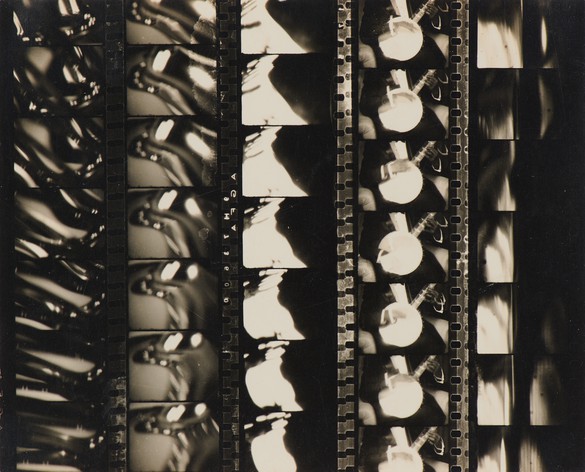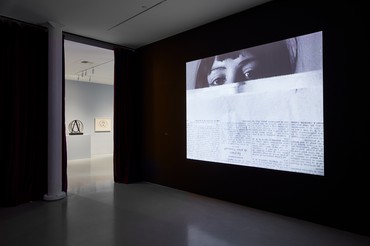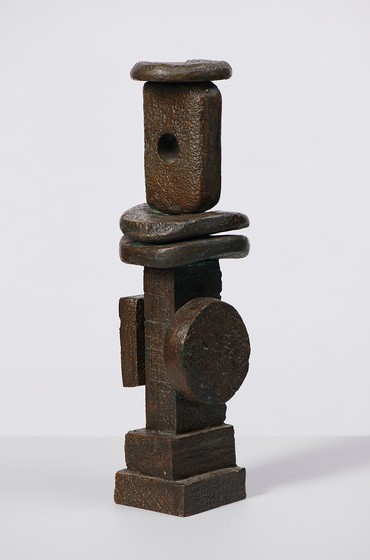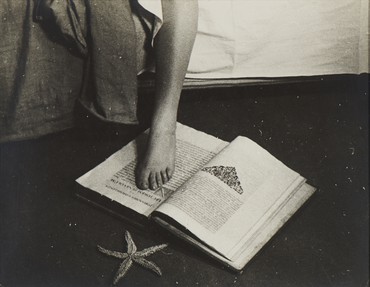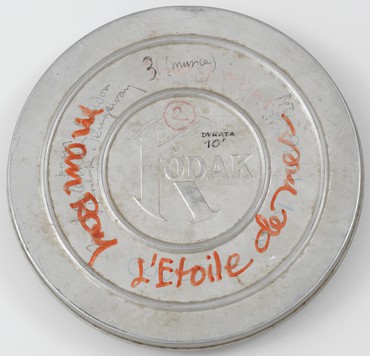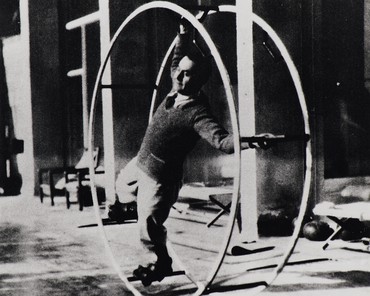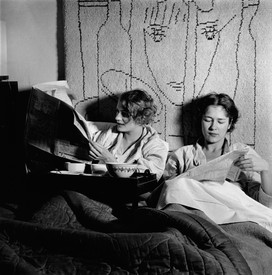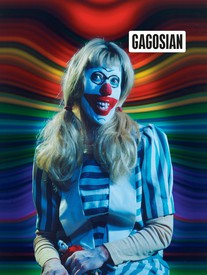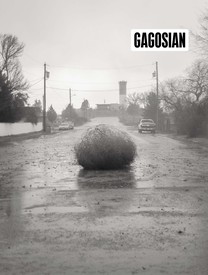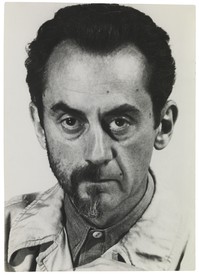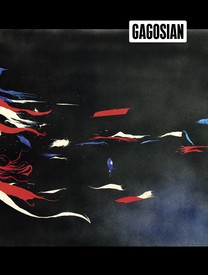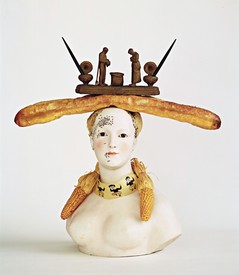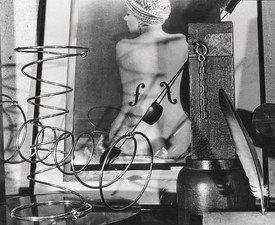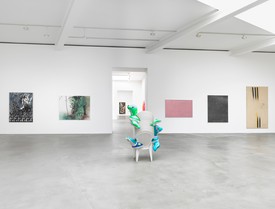
Timothy Baum is a private art dealer and writer, specializing in Dada and Surrealism. He is also the publisher and editor of Nadada Editions, and is separately working on a catalogue raisonné of the paintings of Man Ray, in association with a Paris colleague, Andrew Strauss. He lives and works in New York.
I sat up late last night munching on tasty squares of 90% cocoa dark chocolate and reading the “Dada Films and Surrealism” chapter of Man Ray’s splendid and informative 1963 autobiography Self Portrait. The squares of chocolate that I consumed are obviously irrelevant to this text, except that they helped keep me awake during the very relevant reading of Man Ray’s intimate account of the circumstances, techniques, and vague reasons as to why he elected in the 1920s, in endlessly inspirational Paris and other parts of France, to try his hand at making films.
After reading his recollections of his filmmaking days, my own memories of my experiences of the work of this masterful, eloquent (and particularly versatile!) artist and personality—many of which I shared with him personally—reawakened quite lucidly and journeyed instantaneously from the recesses of my mind to the fore, and suddenly I was ready to address this exciting subject—the early silent, very low-budget black-and-white films of Man Ray—and to share it with you. So here’s what I remember (fortified by seeing the films in question for the first time in years only a scant couple of weeks ago).
I am writing this text to accompany, and hopefully elucidate, the exhibition of the same subject (the 1920s films by Man Ray) at Gagosian, San Francisco. In this exhibition, three of the four films the artist made during that period (excluding the first one, a hastily improvised 3-minute sequence of rayograph-like images, titled Le retour à la raison, made in 1923) are presented, accompanied by vintage still photographs and an array of objects that correspond to the contents of the films.
Chronologically, the first more complete and comprehensive film is Emak Bakia, which was made in the summer of 1926. The film was sponsored by a wealthy retired (but not uninspired) American expatriate stockbroker named Wheeler, who, excited by the portraits Man Ray had made of his beloved wife, invited the artist to vacation at his villa in the French Basque region, near Biarritz, and perhaps to bring along his movie camera and make some sort of film that the businessman would back. Man Ray found the invitation sufficiently enticing and took him up on the offer. The result of this was Emak Bakia, which, edited, runs 22 minutes (the title derives from the name of the Wheelers’ rented villa).
Emak Bakia (subtitled “Cinépoème”) is a combination of a succession of cleverly interspersed images (an eye reflected in the camera’s lens; leaves; a field of flowers; fluttering carpenter nails; lights; spirals and other abstracted shapes; an opening and closing eye; a lady—Mr. Wheeler’s beloved wife—in her elegant motorcar; a sheepfold in its fullest density; a girl dancing the Charleston; a man playing the banjo; the cross-dressing circus performer Barbette at a dressing table; waves flowing gently onto a beach; fish swimming idly about; the artist’s object titled Fisherman’s Idol, composed of cork fishing-net floats; a cutout of a jumping male figure; the top of a violin; some undotted dice; another succession of sundry floating objects), all of which are followed by a very specific cinematic story sequence of a handsome and well-groomed man (portrayed by the former Dada-period dandy and playboy Jacques Rigaut), who appears in a room with a small leather case that when opened reveals a dozen or so celluloid collars that magically arise and fly about the room and then, one by one, disappear entirely. This scene is followed by another brief sequence of unrelated floating objects, and then by the sudden appearance of Man Ray’s muse and lover of that time, the then greatly celebrated Kiki de Montparnasse, opening and closing her eyes, the lids of which have been painted with a second pair of eyes, creating a most unexpected Surrealist effect. This enchanting little moment ends abruptly with the appearance, in capital letters, of the word FIN, and with that, the film comes to an end.
The next film, made in 1928, is the only one of the period that adheres to a vague story line. Bearing the title L’étoile de mer (The Starfish), it also has a running time of barely 20 minutes. For this film, Man Ray used as his guide a poem he had heard read by its author, the Surrealist poet Robert Desnos, and in which he delighted. With Desnos’s permission, he decided to re-create the poem as a film. The (happily disjointed) story sequence, as much a dream as a story, is as follows: A man and a woman, obscured in a disquieting fog-like haze, are walking along a road (the woman is portrayed, as in the previous film, by Kiki de Montparnasse; the man by a non-actor acquaintance of Man Ray who lived in the same building as Desnos, and who probably was never seen in another film again). The two enter a building, climb a staircase to the first floor, and enter a small room containing a single narrow bed (or cot?). Immediately, the woman quite sensually but nonchalantly undresses, observed by her fully dressed gentleman companion. She then lies down upon the bed in an uncontestedly seductive way, and the man turns on his heel and departs. The scene fades out, and the word Adieu appears shakily on the screen.
The next scene is set in a street of factory-like edifices, in which a lone figure, again Kiki de Montparnasse, is standing (perhaps as a vendor?) alongside a tall pile of newspapers. Atop the papers rests a jar containing a single starfish. The man from the previous scene appears, and he greets the lady. They bend over to critically examine the starfish. The man lifts up the jar, and the newspapers, caught up in the wind, blow about all over the street. He runs madly about trying to regather all the newspaper sheets, but in the end only retains a single page, which he commences to read. The scene shifts quite abruptly to a brief tableau of the lady (apparently in an altogether different place) caressing the young man’s head.
Now a complete shift occurs, and we observe a view of a city silhouetted in a thick, fog-like mist. This is quickly supplanted by an image of several jars containing starfish, all revolving slowly about. Next we see a still-life composite of wine bottles, bananas, and other disparate objects, which is immediately followed by a totally separate view of Kiki seated on the cot again, this time with her bare foot resting atop an open book, with a starfish (also on the floor) alongside.
We next encounter Kiki walking along a road once again, where she is soon joined by her original male companion. A close-up reveals that Kiki is wearing a mask. The film cuts to the man standing by himself, studying a tracing in dark ink of the lines on the palms of his hands. Kiki (in a succeeding shot) reappears ascending the inner staircase once again. On one of the steps a starfish has settled. Once upstairs, Kiki is seen with a dagger in her hand, superimposed with the floating starfish.
At this point, the film cuts to a view of a vast array of stars in the dark night sky, then to a nocturnal view of trees by a river. Next we see Kiki seated by a burning fire, then a text reading belle comme une fleur de verre. This is succeeded by a frame showing her attired like a warrior: in a sheet, helmet, and staff. Then we see a close-up image of flames. After this, we gain a glimpse of the earlier factory-lined street; then we see Kiki asleep (was this all but a dream?).
Finally we return to the original road where we first encountered the man and woman walking together. Again Kiki encounters the man, and this time they stop and shake hands. They chat for a moment, and then are joined by another man, played by Desnos. Kiki turns her back on her original suitor and walks away with the new arrival.
The film ends with a cut to the jilted man, all alone, regarding the jar with the starfish inside. There is a second, very brief transition to Kiki, looking through a piece of glass, which subsequently shatters. This is followed very simply by the projection of two final words: the end.
This now brings us to the final May Ray film of the 1920s, the silent, black-and-white Les mystères du Château du Dé, with which the artist closed out the decade and, additionally, his brief and intentionally abandoned early filmmaking career, in the winter of 1929. This is a film neither intended nor initiated by Man Ray in any way. It reflects entirely the whimsical notion of the Vicomte Charles de Noailles, a blue-blooded aristocrat, who, alongside his wife, Marie-Laure, was an inveterate patron of the arts. The Vicomte enjoyed taking a midwinter break from what Man Ray referred to as “the rigors of the Paris climate,” and elected to descend to his domain (created by one of the most trendy architects of that era, Robert Mallet-Stevens) in the South of France.
Noailles’s idea for the film project was for Man Ray to join him and a group of his friends at his compound (a cluster of cube-shaped and rectangular buildings) and make an informal film of his property (inside and out), with the participation of his guests, as a form of divertissement. He also explained that this was to be a totally noncommercial venture, but that the artist would be compensated for his time and his expenses. Man Ray, respectful of the Vicomte, agreed to join him in the project.
For me personally, the success of this film is less aesthetic than as a valid period piece, chronicling the frivolous lifestyles of privileged families at that time (ironically just a few months before the demise of the world’s economy resulting from the calamitous Wall Street crash that would occur later that year). The only story line is that two men in a Parisian café roll a pair of dice and, when the number comes up affirmatively, go out to their car and drive away. The succeeding drive—which eventually lands them in the South of France—is sparsely recorded, showing a few bare changes of landscape along the way. Finally, the travelers arrive at their presumed destination: a cluster of houses meant to serve as a modern château. The men drive up the hill atop which the edifices stand, and enter the surrounding walls through a portal of some sort (at no point that I recall are these two travelers ever identified).
We next see, via Man Ray and his assistant’s cameras, the château itself. Great emphasis is placed on the corridors and public halls. Beyond that, the more eccentric spaces are highlighted: the indoor swimming pool and its lounging areas; the gymnasium, with its elaborate array of diversional equipment; and so on. The spaces fill up with people—the actual guests visiting the château at that time. All sorts of frivolous activity ensues in and around the pool and its surrounding area, and in the gymnasium, with all of its paraphernalia. Sometimes the guests are in costume, variously sporting masks that can conceal their identities. Nothing intimate ever occurs, and no exotic dining scenes or glimpses of any sleeping rooms are ever presented. At different times, dice of varying sizes are thrown; presumably to decide what actions would be taken according to their positive or negative outcomes. Aside from the sequences of guests cavorting, nothing really happens. Toward the end of the film, a woman and a man (the Comte de Beaumont, assuredly one of the more estimable of the guests) ascend the same hill as the unidentified duo who arrived at the beginning of the film, and, finding some oversize dice there, kick them around for a short bit of time before reverting to performing a brief session of other gyrational exercises. It is possible that this couple metamorphose into statues of stone—that, I don’t clearly remember. The final shot shows the oversize dice displayed in an articulated hand. This is followed by the word FIN, and so does this disjointed film end. The theme of the dice (and the suggestion of chance, as conjured by the outcome of the rolling of them) was evidently inspired by a poem by Stéphane Mallarmé.
I suppose that because this film was created to fulfill a whim of the Vicomte de Noailles, and simply as a diversion for his friends, it does not have to be judged as a success or a failure. Luckily, the other two films mentioned previously—Emak Bakia and L’étoile de mer, pay ample tribute to the incontestable ingenuity and cleverness of their creator, Man Ray. Because of the artist’s variety of talents as painter, photographer, and renderer of unforgettable, ingenious objects, he really had no need to reenter the arena of filmmaking again.
December 30, 2019
New York City
Man Ray: The Mysteries of Château du Dé, January 14–February 29, 2020, San Francisco
Artwork © Man Ray Trust/Artists Rights Society (ARS), New York/ADAGP, Paris 2020
